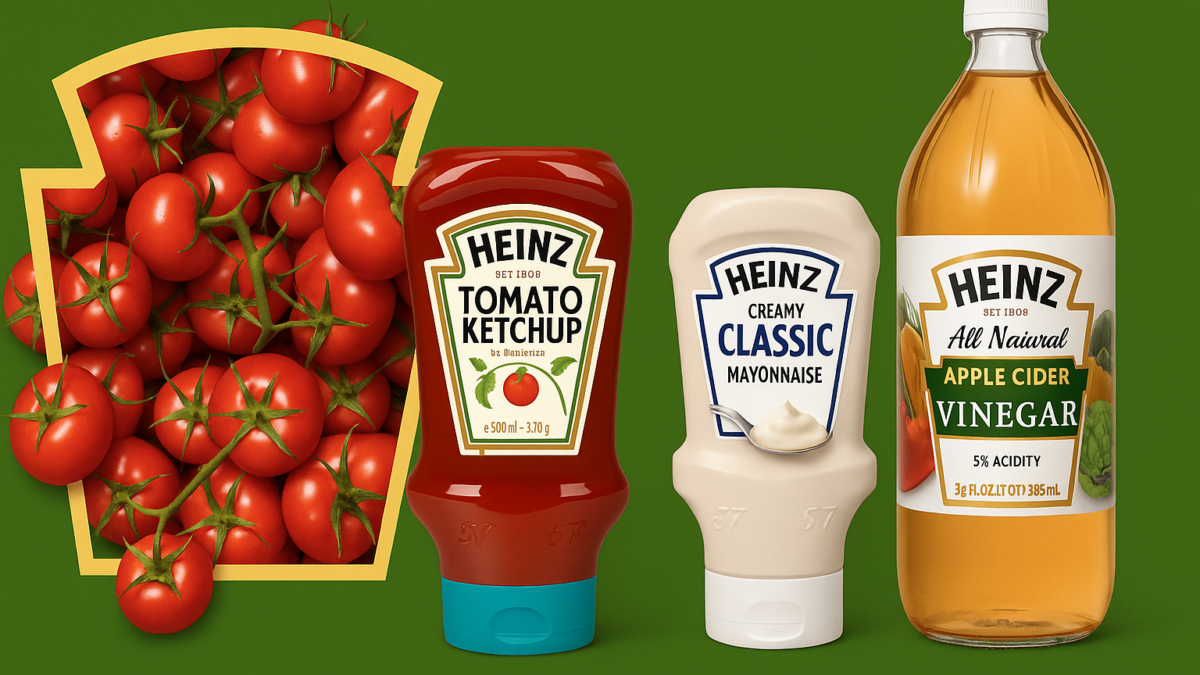How Heinz Captured Global Markets: A Masterclass in Branding & Marketing
Table of Contents
Introduction
Few brands enjoy the instant recognition and trust that Heinz commands. From supermarket aisles in the U.S. to street food stalls in India, the Heinz name is synonymous with quality and familiarity. But how did a brand founded in 1869 become a global marketing powerhouse? This article breaks down the Heinz branding strategy—revealing the key branding, design, and marketing elements that fueled its worldwide success.

The Power of Iconic Visual Identity
- Consistency Across Borders: One of Heinz’s biggest assets is its unwavering visual identity. The brand’s iconic keystone logo, red-and-white color scheme, and distinct label design remain consistent across geographies. This visual consistency reinforces trust, making it instantly recognizable regardless of location or language.
- Simplicity That Sticks: Heinz products embrace minimalist packaging. The bold typography and color-blocking design make its ketchup bottle not just a condiment—but a branding icon. According to a 2022 Nielsen study, 59% of consumers say simple packaging increases their likelihood to buy. Heinz nails this principle.
- Building Emotional Connections Through Storytelling: Heinz doesn’t just sell products—it sells nostalgia, trust, and comfort. Their advertising taps into generational moments, like childhood meals, family dinners, and road trips. From the “Heinz: It Has to Be” slogan to recent campaigns like “Draw Ketchup,” the brand invites emotional participation, not just product recall.
Key Takeaways: What Brands Can Learn from Heinz
- Consistency breeds trust: Keep your logo, typography, and tone uniform.
- Emotion drives loyalty: Don’t just market products—tell stories.
- Innovate meaningfully: Solve real consumer problems (like messy bottles).
- Adapt globally, market locally: Respect culture without losing identity.
- Use partnerships smartly: Amplify reach without diluting the message.
Conclusion: A Blueprint for Branding Excellence
Heinz isn’t just a success story—it’s a branding case study that continues to evolve. By maintaining design consistency, emotional resonance, localized relevance, and product innovation, Heinz has etched itself into global culture—one bottle at a time.
Call to Action (CTA):
Want to uncover more branding strategies from iconic companies like Heinz?
👉 Subscribe to iTMunch for weekly insights on branding, design, and marketing innovation.
FAQs
Q1. Why is Heinz’s branding so effective?
Because it’s simple, consistent, and emotionally appealing. Heinz keeps the same design worldwide and tells stories that people connect with.
Q2. What makes the Heinz ketchup bottle iconic?
Its clean design, red color, and bold label are instantly recognizable. It’s not just packaging—it’s part of pop culture.
Q3. How does Heinz stay relevant in different countries?
Heinz keeps its global brand identity but tailors marketing to local cultures. This balance helps it stay relatable everywhere.
Q4. What can small businesses learn from Heinz?
Stick to consistent branding, tell meaningful stories, and always aim to solve real customer problems.
Q5. How does Heinz use innovation in branding?
Heinz creates practical solutions, like easy-squeeze bottles, while keeping its classic brand look. It shows that innovation doesn’t have to mean changing everything.





